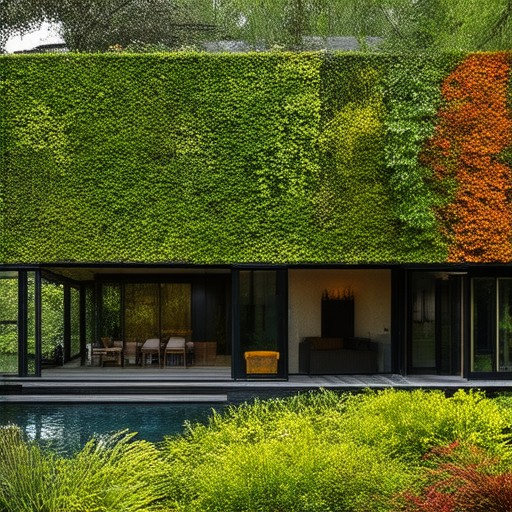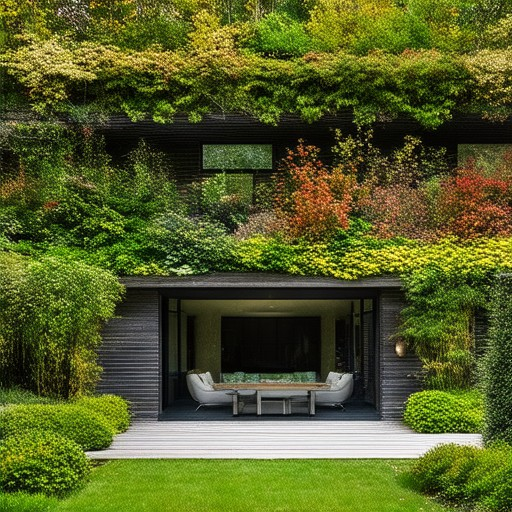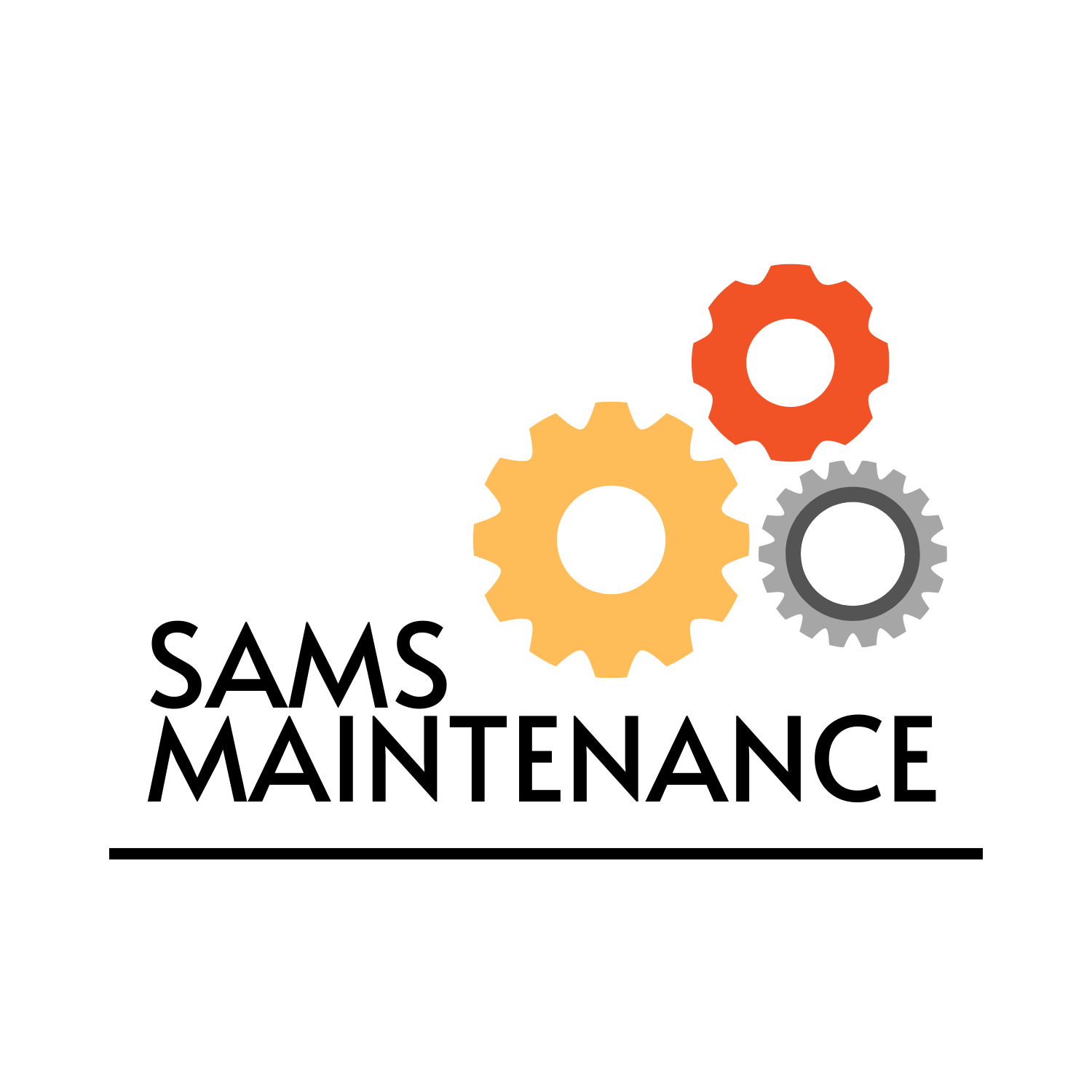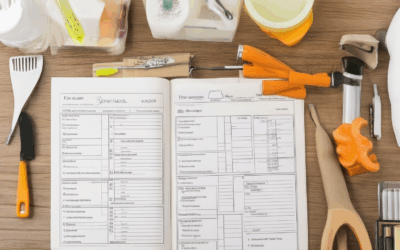Seasonal home improvement projects offer a unique opportunity to refresh your living space, enhance functionality, and even boost your home’s value—all while having fun in the process. Whether you’re aiming for a quick DIY update or a more substantial renovation, there’s something special about tackling projects aligned with the changing seasons. From cozy winter upgrades to vibrant spring transformations, these seasonal initiatives can transform your home into a space that feels fresh and invigorating year-round. This guide explores everything you need to know about maximizing value and enjoyment through seasonal home improvements, including budget-friendly ideas, high-impact projects, and expert tips to ensure your efforts pay off. Stay tuned to discover how you can make the most out of your next home improvement venture.
Key Takeaways
– Kitchen Remodels: Boost daily functionality and resale value with modernized cabinets, countertops, and appliances, offering an ROI of 80-120%.
– Bathroom Renovations: Modernize fixtures, tiles, and layouts to enhance comfort and appeal, delivering an ROI of 85-95%.
– Smart Home Technology: Integrate automated systems for convenience and buyer appeal, with ROI varying widely but often exceeding 50%.
– Energy Efficiency Improvements: Reduce costs and attract eco-conscious buyers with solar panels, efficient windows, and improved insulation.
– Landscape Design: Create inviting outdoor spaces and curb appeal with well-designed decks, patios, and gardens.
– Garage Renovation: Convert garages into functional spaces for added value and usability.
– Interior Updates: Refresh interiors with new paint and flooring to create a modern atmosphere.
– Exterior Upgrades: Enhance curb appeal and protect your home with new siding, roofs, and windows, offering an ROI of 60-80%.
– Strategic Projects: Prioritize kitchen and bathroom remodels for the highest ROI, aligning with local real estate trends.

Understanding the 30% Rule in Home Renovations
The 30% rule is a helpful guideline for homeowners planning renovations, particularly those focused on maximizing property value. Here’s a breakdown of what it entails:
Definition of the 30% Rule
The 30% rule suggests that homeowners should not spend more than 30% of their property’s appraised value on renovations. This principle helps ensure that upgrades align with the property’s market value, preventing overspending and excessive remodeling.
Key Considerations
- Budgeting:** Keep renovation costs capped at 30% of the property’s value to avoid over-improvement.
- Property Value:** Renovations should enhance the property’s value without exceeding its market worth.
- Project Selection:** Focus on improvements that offer the highest return on investment, such as kitchen upgrades or adding functional space.
Why the 30% Rule Matters
This rule serves as a financial safeguard, ensuring that renovation expenses remain justified by the property’s value. It encourages wise decision-making, balancing aesthetics with practicality and investment returns.
Renovation Projects That Fit the 30% Rule
- Kitchen Modernization
- Bathroom Updates
- Adding Square Footage
- Landscaping and Curb Appeal Enhancements
Applying the 30% Rule Effectively
When considering renovations, evaluate potential returns against the 30% threshold. Prioritize projects that offer tangible benefits, such as increased functionality or enhanced appeal, to maximize ROI.
Conclusion
Adhering to the 30% rule is a smart approach for homeowners aiming to enhance their properties wisely. By staying within this limit, you ensure your renovations contribute positively to your home’s value without unnecessary expenses.
Most In-Demand Home Improvements
The demand for home improvements continues to evolve with changing tastes and technological advancements. Here are some of the most sought-after projects among homeowners:
- Kitchen Remodeling : A popular choice due to its ability to boost functionality and resale value. Modern designs often incorporate sustainable materials and smart appliances.
- Bathroom Renovation : Small yet impactful, bathroom upgrades are consistently ranked high. Energy-efficient fixtures and spa-like amenities are key features.
- Energy Efficiency Enhancements : Homeowners are increasingly looking to reduce utility bills through improvements like solar panels, insulation, and high-efficiency HVAC systems.
- Smart Home Integration : The demand for connected devices has surged. Smart lighting, thermostats, and security systems are now standard in many homes.
- Landscape and Outdoor Living Spaces : People are investing more in their yards, patios, and decks. Outdoor kitchens and fire pits are becoming popular additions.
- Storage Solutions : Adding garages, sheds, or closet systems is a practical upgrade that solves real problems for many families.
- Windows and Doors : Replacing old windows with energy-efficient ones or upgrading doors to modern styles improves both curb appeal and comfort.
These projects not only enhance the functionality and beauty of a home but also align with current trends in sustainability and technology. Planning these improvements thoughtfully can lead to significant returns on investment.

Examples of Home Improvement Projects Requiring Formulas
The following are four examples of home improvement projects that require the use of mathematical formulas:
- Painting a Room
- Calculating wall area:
A = length \times width - Calculating paint needed:
V = A \times height - Determine number of brushes or rollers needed.
- Installing Flooring
- Calculating floor area:
A = length \times width - Calculating tiles needed:
N = A / tile\_area - Estimating grout required:
G = N \times grout\_coverage - Building a Fence
- Calculating perimeter:
P = 2 \times (length + width) - Calculating material cost:
C = P \times cost\_per\_foot - Determining posts needed:
N = P / post\_spacing - Creating Custom Shelving
- Calculating shelf length:
L = width + depth - Calculating supports needed:
S = L / support\_spacing - Estimating weight capacity:
W = S \times load\_per\_shelf
These projects require careful calculation to ensure materials are sufficient and costs are manageable. Proper use of formulas helps in planning and executing the projects effectively.
For more detailed guides and tools to assist with your home improvement projects, visit our Tools Section or explore our Project Guides .

Home Projects That Add the Most Value
-
Kitchen Remodel
A kitchen remodel is one of the most valuable home improvements due to its impact on daily life and resale value. Upgrading cabinets, countertops, and appliances can significantly enhance functionality and aesthetics.
-
Bathroom Renovation
Similar to kitchens, bathroom renovations can greatly improve a home’s value. Modernizing fixtures, tiles, and layouts can create a more comfortable and appealing space.
-
Smart Home Technology Integration
Investing in smart home features like automated lighting, security systems, and energy management can add convenience and appeal to potential buyers.
-
Energy Efficiency Improvements
Projects focused on energy savings, such as installing solar panels or upgrading to energy-efficient windows, can reduce utility costs and attract environmentally conscious buyers.
-
Landscape Design and Outdoor Features
A well-designed outdoor space, including decks, patios, gardens, and fencing, can substantially enhance a home’s curb appeal and overall value.
-
Garage Renovation
Converting a garage into usable storage or living space can provide practical benefits and add significant value to the home.
-
Interior Painting and Flooring Updates
Freshening up interior spaces through painting and flooring upgrades can create a more modern and inviting atmosphere, appealing to potential buyers.
-
Exterior Upgrades
Projects like new siding, roofing, or window replacements can improve a home’s exterior appearance and protect against wear and tear.
-
Room Reconfiguration
Changing the layout of a room to better suit the homeowner’s needs can add functionality and comfort, making the home more attractive to buyers.
How to Increase Home Value by $50,000
To effectively increase your home’s value by $50,000, focus on strategic improvements that offer the highest return on investment. Here’s a step-by-step guide:
- Kitchen Remodel :
- Cabinets : Replace outdated or damaged cabinetry with modern, high-quality units.
- Countertops : Install durable materials like quartz or granite.
- Appliances : Upgrade to energy-efficient models such as smart refrigerators or induction cooktops.
- Flooring : Consider updating the flooring with tiles or hardwood floors.
- Bathroom Updates :
- Fixtures : Replace outdated sinks, showers, and toilets with modern, water-saving models.
- Tile Work : Update grout and tile to enhance the bathroom’s aesthetic.
- Lighting : Add LED lighting for a contemporary look.
- Energy Efficiency Improvements :
- Windows : Install energy-efficient windows to reduce heating and cooling costs.
- Insulation : Improve attic or wall insulation to enhance energy retention.
- Solar Panels : Consider adding solar panels to lower utility bills and add value.
- Landscaping Enhancements :
- Yard Maintenance : Keep lawns neatly trimmed, prune trees, and ensure garden areas are tidy.
- Outdoor Lighting : Install pathway lights or landscape lighting for added ambiance.
- Patio/Deck : Expand or renovate outdoor spaces with composite decking or pavers.
- Storage Solutions :
- Garage Conversion : Convert an unused garage into usable space, such as a bedroom or office.
- Attic Renovation : Turn attic space into functional rooms like a playroom or home gym.
- Smart Home Technology Integration :
- Smart Lights : Install programmable light switches for convenience.
- Smart Thermostat : Integrate a Nest or Ecobee thermostat for energy savings.
- Home Security System : Add a modern security system with cameras and alarms.
- Curb Appeal Boosters :
- Paint Exterior : Refresh the exterior with a fresh coat of paint in a neutral color.
- Front Door Replacement : Choose a stylish, energy-efficient door.
- Deck Addition : Add a deck with built-in seating or a grill area.
- Exterior Upgrades :
- Roof Replacement : If your roof is old, consider replacing it with a newer material like asphalt shingles or metal roofing.
- Siding Replacement : Update siding to vinyl or fiber cement for durability and aesthetics.
- Focus on Return on Investment :
- Prioritize projects that historically offer higher ROI, such as kitchen and bathroom remodels.
- Research local real estate market trends to align your improvements with buyer demands.
By combining these strategic enhancements, you can achieve a noticeable increase in your home’s value. Consider consulting a real estate agent or contractor for tailored advice based on your specific situation.

What Home Improvements Have the Highest ROI?
The following home improvements are known for offering significant returns on investment:
- Kitchen Remodel : A kitchen remodel typically yields one of the highest ROIs. Projects like replacing countertops, refacing cabinetry, or upgrading appliances can significantly boost your home’s value. The average ROI ranges between 80% and 120%.
- Bathroom Renovation : Similar to kitchens, bathroom renovations are highly rewarding. Installing new fixtures, adding a walk-in shower, or modernizing the layout can provide a substantial return. Expect an ROI of around 85%-95%.
- Deck or Patio Addition : Adding a deck or patio extends your living space and can increase your home’s value. While the ROI varies depending on materials and design, it often falls between 70% and 90%.
- Smart Home Technology : Integrating smart home features like automated lighting, security systems, or smart thermostats can enhance convenience and appeal. The ROI here can vary widely, but many see a return of 50%-100%, especially in tech-savvy neighborhoods.
- Window Replacement : Replacing outdated windows with energy-efficient models can reduce utility bills and improve your home’s curb appeal. The typical ROI for window replacement is approximately 75%-85%.
- Exterior Updates : Enhancing your home’s exterior with new siding, a metal roof, or a fresh coat of paint can greatly improve curb appeal. These updates generally offer an ROI of 60%-80%.
For more details on these projects and how to get started, visit our Home Improvement Ideas section.
Conclusion: Whether you’re looking to modernize your home or simply enhance its functionality, these improvements are excellent investments. Prioritize based on your budget and lifestyle preferences to maximize your ROI.




0 Comments